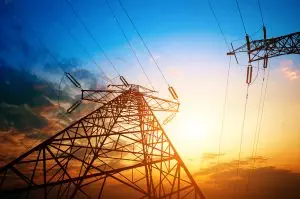“Plug-and-Play DER Challenge” Seeks Industry Solutions to Address Technology Silos
 The nation’s power grid is undergoing more disruptive change than at any point since its inception more than a century ago. The proliferation of distributed energy resources (DERs) and new models of customer engagement have added significant complexity. Simultaneously, innovative companies and business models are transforming the traditional generation, transportation and consumption of electricity. From rooftop solar and energy storage to smart thermostats and electric vehicles, an energy revolution is underway.
The nation’s power grid is undergoing more disruptive change than at any point since its inception more than a century ago. The proliferation of distributed energy resources (DERs) and new models of customer engagement have added significant complexity. Simultaneously, innovative companies and business models are transforming the traditional generation, transportation and consumption of electricity. From rooftop solar and energy storage to smart thermostats and electric vehicles, an energy revolution is underway.
A key challenge to realizing the benefits of this revolution is enabling these new technologies to work together or interoperate, to optimize value. Example benefits include improving grid reliability and resiliency; shaving and shifting peak load; reducing carbon emissions; deferring expensive grid and infrastructure investments, and empowering consumers to better manage their energy consumption and costs.
For example, consider a household that has an electric vehicle and charger, rooftop solar panels, an energy storage system in the garage, a smart thermostat and an advanced meter providing communication between these devices and the utility. With these devices interoperating intelligently, solar generation is directed to EV charging and storage during times of high production and low costs. When the sun sets, the stored energy is used to meet increased load, reducing stress on the grid and maintaining comfort and convenience for the customer.
A Barrier to this Optimal Future
However, achieving these outcomes is predicated on these technologies being interoperable, providing a seamless and low-friction experience for users. The challenge is that many of these new and disruptive technologies use proprietary interfaces, and as a result, they do not yet interoperate.
Interoperability is one of those marketing words that has been overused to the point that its meaning has been greatly diluted. Fundamentally, it means things work together in expected ways. Specifically, interoperability is a characteristic of a product or system whose interfaces are completely understood, that work and share data with other products or systems. Common interoperability examples include a computer mouse that plugs in and works instantly with any computer or a smartphone that quickly and seamlessly pairs with a car’s Bluetooth system.
A Path Forward
For the past three years, a consortium of national laboratories called the Grid Modernization Laboratory Consortium (GMLC), with sponsorship from the U.S. Department of Energy, has collaborated with industry stakeholders to develop a strategic vision and practical pathway for achieving broad interoperability for energy-related assets, technologies and devices.
In August 2018, the GMLC announced the “Plug & Play DER Challenge,” a call for proposed concepts to develop interoperability solutions to lower integration costs, increase system performance, and enhance capabilities.
Leave a Reply